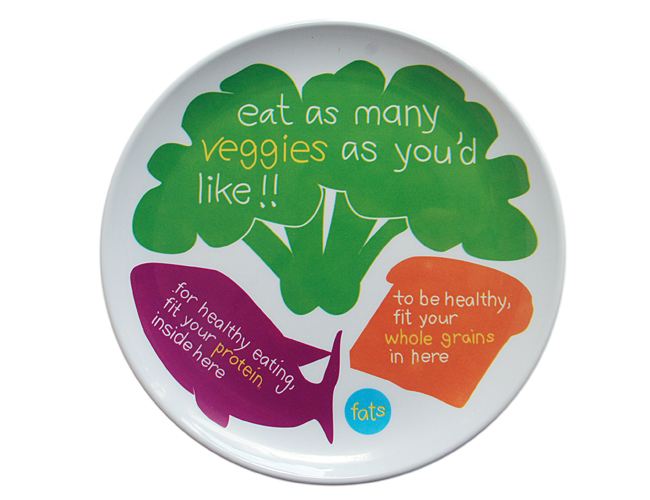by Amy Bohnert, PhD, Guest Blogger
As part of our 10th anniversary first-quarter focus on data and research, we asked 2006 seed grant recipient Amy Bohnert, PhD, Associate Professor of Psychology at Loyola University Chicago, to write about her 2006 seed grant project and what happened next.
It started as an idea that my best friend and I casually discussed over dinner. What about designing a plate that can help children and families learn about healthy eating? We could even do an experiment to determine whether it works in changing behavior. This was the beginning of the Nutri-plate. The first step was applying for a seed grant from CLOCC to get the money to support the pilot research. Five years later, we had a publication detailing the promising findings from pilot work in the Journal of Nutrition Education and Behavior and had founded a company that sells the Nutri-plate. How did we get there?
The most important step was obtaining the funding from CLOCC to develop and evaluate the plate. This happened by applying for a CLOCC seed grant. My proposed pilot, Evaluating the Impact of Nutritionally-Designed Dining Ware on Food Choices: A Pilot Study, was funded in June of 2006. In that study, sixteen African American adolescents (mean age = 12.94 years; 66% male) were randomized to participate in either plate design or nutrition education sessions. Adolescents’ input was used to create a dinner plate that would show healthy amounts and types of food that should be eaten at meals, what became known as the Nutri-plate. Participants’ food selection and intake was also evaluated. Adolescents indicated the Nutri-plate should include simple yet colorful visual and textual information about healthful eating. We also found that when using the Nutri-plate, participants selected less food overall, more fruit, and more broccoli au gratin. Participants with higher BMIs selected a greater amount of healthful food when using the Nutri-plate.
Whenever we presented this data, we always got the same question, “Where can we buy one of these plates?” At first, we did not have an answer. The Nutri-plate we manufactured for the study was not cost-effective at more than $20 per plate. We could locate manufacturers, but how could we decide if we should take the risk and invest the capital needed to sell the Nutri-plate? We decided that it would be good to do more market research before proceeding. In June of 2008, we exhibited the Nutri-plate at a childhood obesity conference in Los Angeles, CA and received a very positive response. Based on this, we decided to create a company and pursue the commercial side of our research venture.
Although we had been warned that it would be a long process until we actually could sell plates, we never quite believed it. Much like the process of research, setting up a company to sell a product involved many complex steps. Were it not for our enthusiasm, we might have easily given up. We learned how to write articles of organization to form a corporation, create a website, apply for a trademark, set up simple accounting practices, pay sales tax, secure product liability insurance, and write up a business contract. A critical piece in this process was having friends who were willing to consult with us when we got stuck. We tried to find ways to distinguish our product by publishing the data demonstrating its effectiveness in changing behaviors.
The payoff has not (yet) been monetary—we are still in the “red.” We do have customers all over the world contact us – Canada, Brazil, Costa Rica, England, Australia – with inspiring stories and interest in our product. Some of our favorite stories are close to home. My daughter and many of her friends joyfully takes their Nutri-plates to school every day. These are the rewards, but the ultimate prize is getting children and their families to discuss, engage, and enjoy healthy eating. To think this all started from my CLOCC seed grant in 2006 – from small seed grants, great things can grow!



